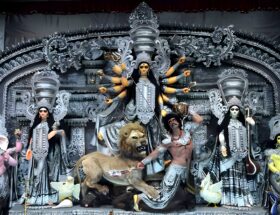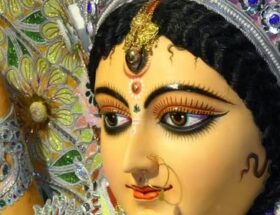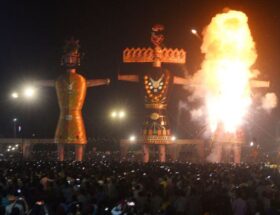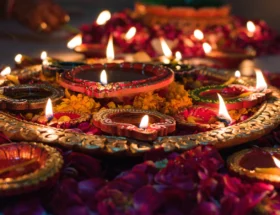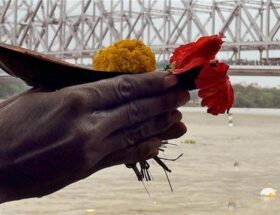Vikram Samvat: Looking Back into the Ancient Heritage of the Indian Calendar System
Introducing to Vikram Samvat
Vikram Samvat Calendar is certainly one of the oldest and main existing systems in the country of India for relative purposes. It indeed is not just a device used to check or keep time; it represents so much of the rich heritage associated with the nation of India. This was established by one of the most celebrated kings of Ujjain, King Vikramaditya. This one has still found application in these days mostly within the northern and western parts of India.
Vikram Samvat: The Historical Significance of This Calendar
Officially, the record was during King Vikramaditya’s time in 57 BCE when he had gained high victory against the Sakyas and hence became the official calendar during his era in the Vikrami calendar. As a light note, the Vikram Samvat calendar can be termed or regarded as a lunisolar calendar because it conceives the movement of the moon and combines that with the solar year, which is an opposite feature to the Gregorian calendar.
Structure and Computation of Vikram Samvat
The structure in the case of the Vikram Samvat calendar is rather different as it refers to the twelve-month cycle of the calendar according to the changing phase of the moon. Further division is done into months that make two fortnights, Shukla Paksh being the brightening fortnight and Krishan Paksh being the fortnight of darkening. Chaitra is the first month of the year; the month follows the date of the Gregorian calendar. Hence it usually falls on the month of March or April. The yearly gap between Vikram Samvat and Gregorian therefore, is more than almost 20 minutes.
Cultural and Religious Significance
Vikram Samvat is an intrinsic part of Indian culture and religious rituals. That would mean the base for celebrating most of the festivals—be it Diwali, Holi, or Navratri. This would further imply the auspicious dates for marriage, for religious rituals, or any other important ceremonies in India. Vikram Samvat has already opened its year in one full state that is in full celebrative swing: Gujarat. It started on the day following Diwali.
Importance and Relevance for Today
Vikram Samvat finds extensive use in the Gregorian calendar in use in India today. It was once a national calendar of Nepal, although it still holds this position as an official calendar there. It is even in use with astrologers and for religious purposes in India. Presently, it is in use by the Gujarat government in the management of affairs for the state calendar.
Conclusion
Vikram Samvat is that age-old wisdom, an eternal wealth of India, a class segregated by an age barrier. Any ordinary day would require the more practical handling of a Gregorian calendar; Vikram Samvat still stands to be especially reflective in a million lifetimes, both culturally and religiously. Although many centuries old, it continued to survive up to the present day in continued use much to the testament of the value kept within as a symbol of grand heritage for India.
Thus, the knowledge of Vikram Samvat enlightens the complexity of world time-keeping phenomena, having huge involvement in culture and religion. It goes without saying that such an ancient calendar will be easily standing for a living tradition—a river from the past into the present of India.
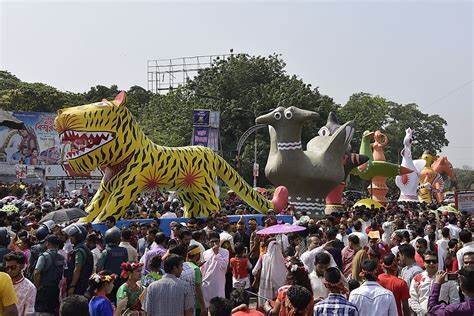
Sarees that women can wear in this festival: Aesthetic Blue & Red Cotton Saree
FAQs on Vikram Samvat
1. What is Vikram Samvat?
Vikrama Samvat is India’s oldest calendar reckoning systems, introduced by King Vikramaditya of Ujjain in 57 BC. This is a Lanisolar calendar and, hence, it captures the lunar and solar year phases.
2. How is Vikrama Samvat different from the Gregorian Calendar?
Vikram Samvat is the Gregorian calendar, the complete opposite of the Luni solar calendar which is the solar calendar. It began about 57 BC; So in fact, it takes about 57 years for the Gregorian calendar to start.
3. Who found the Vikram Samvat calendar?
Vikram Samvat originated from Vikramaditya of Ujjain. The nature of the month, when he started count from 57 B.C., after the victory over the Saka, was very different from that of other calendar systems.
4. How are the months arranged in the Vikrama Samvat?
The months of Vikrama Samvat can be divided into two parts, namely Shukla Paksha. This would indicate that this is the time of the waxing moon, as the dark side indicates that waning moon. It has, in all, 12 months, and usually, its first month is Chaitra.
5. What does Vikram Samvat represent in Hindu culture and society?
Besides, since most people take it for Hindu holidays and other religious events, such as Diwali, Holi, Navratri, etc., they set up good dates for marriage or any other ceremony.
6. Do both countries widely accept Vikram Samvat?
Nepal officially uses Vikram Samvat as their national calendar. It is very much used with reference to religious matters and occasionally by astrologers in India.
7. What do people do on The Vikram Samvat New Year?
Thus, this New Year remained a Gujaratis’ event celebrated on the second day of Diwali along with others as an after-effect of it to this day. It thus becomes another day of prayer and feasting for new beginnings that mark the entry of the new year in the Vikram calendar.
8. How does Vikram Samvat relate to today?
Vikram Samvat is applied to culture and religious functions. Also, it is currently in incorporated use in India and Nepal. It brings chronological sequence to the festivals, religious rituals, and astrological predictions that we carry out in time.
9. How do you convert a Vikrama Samvat year to a Gregorian year?
Sixty is the only way to change a Vikram Samvat year to a Gregorian year. That means with it, it will, into the future, in this case with many more years to come, merge into the coming years so shall be Vikram Samvat 2081, a Gregorian year 2024.
10. How much to astrology is a Vikram Samvat significant?
Other than this fact, that remains to be the only difference the impact has created in terms of hierarchy of the system in astrology; otherwise, it does relate in terms of the supporting date and time calculation of lunar phase in Vikram Samvat calendar system.

